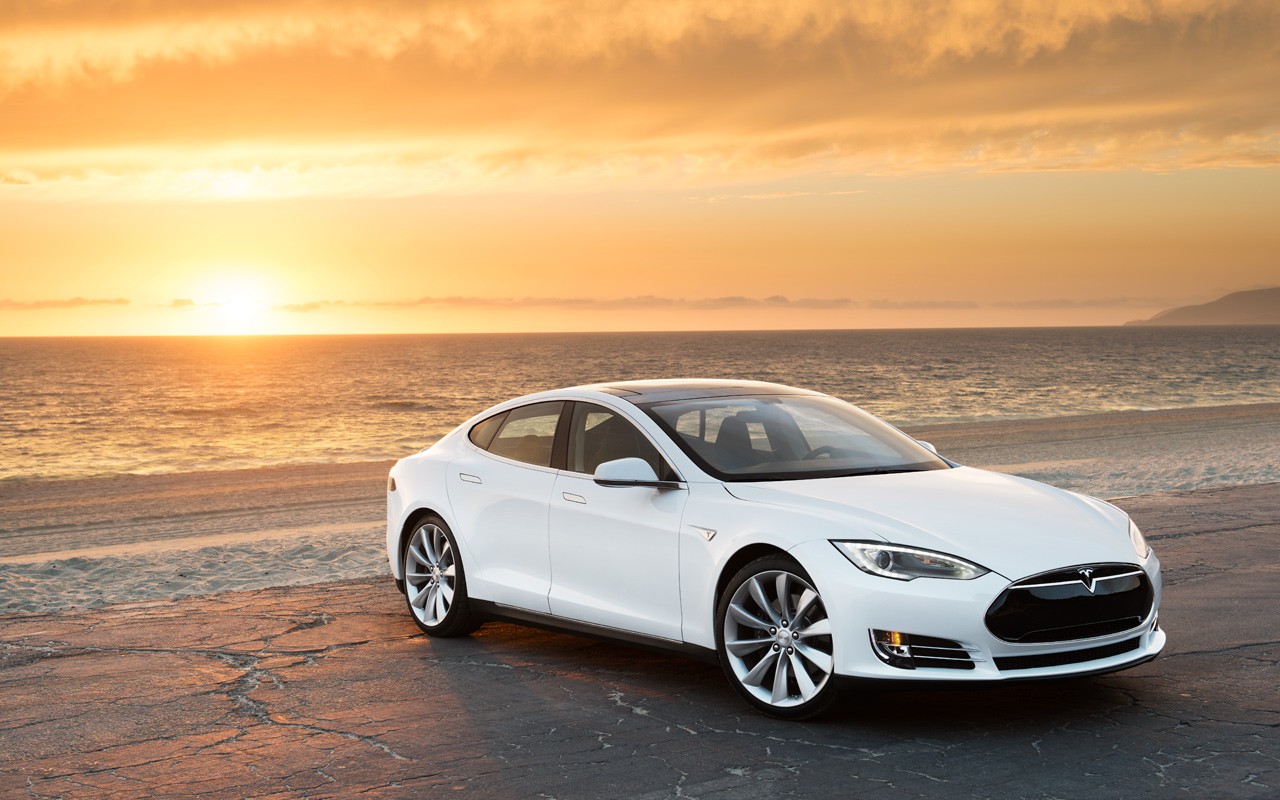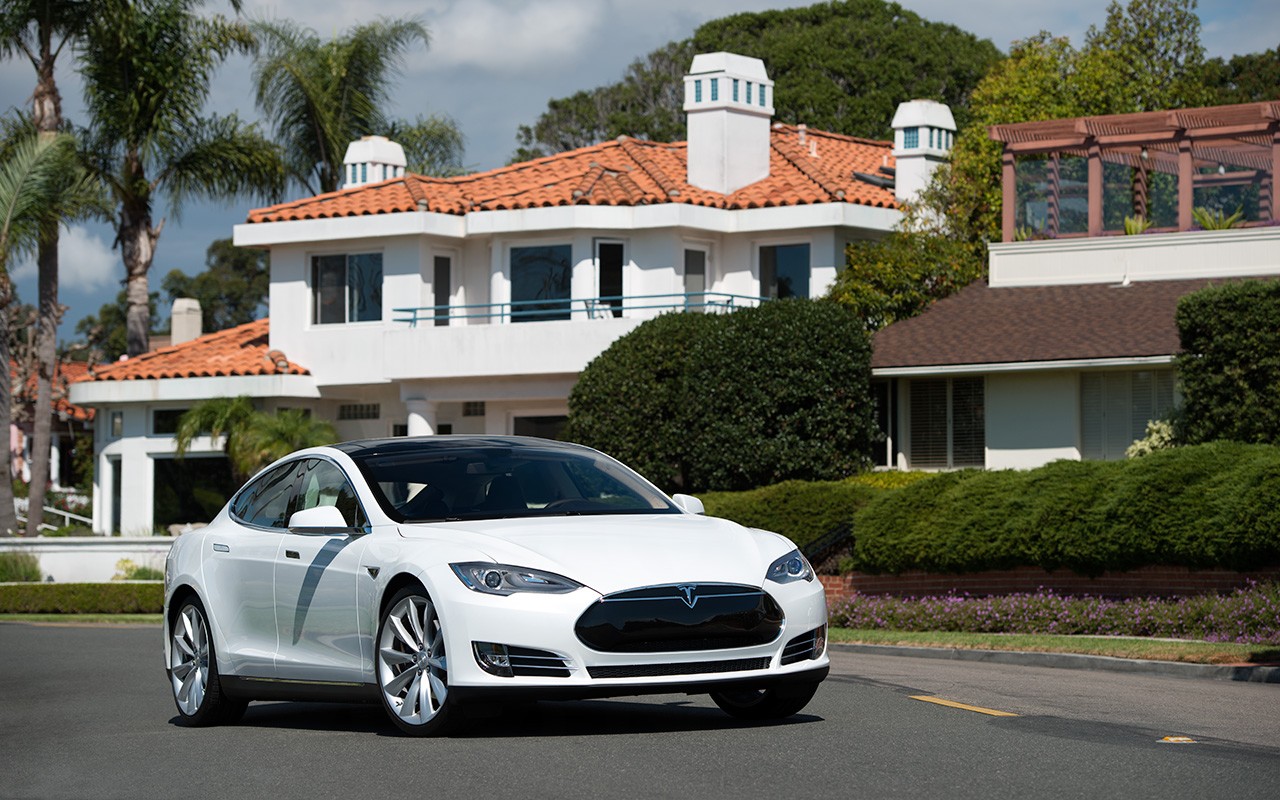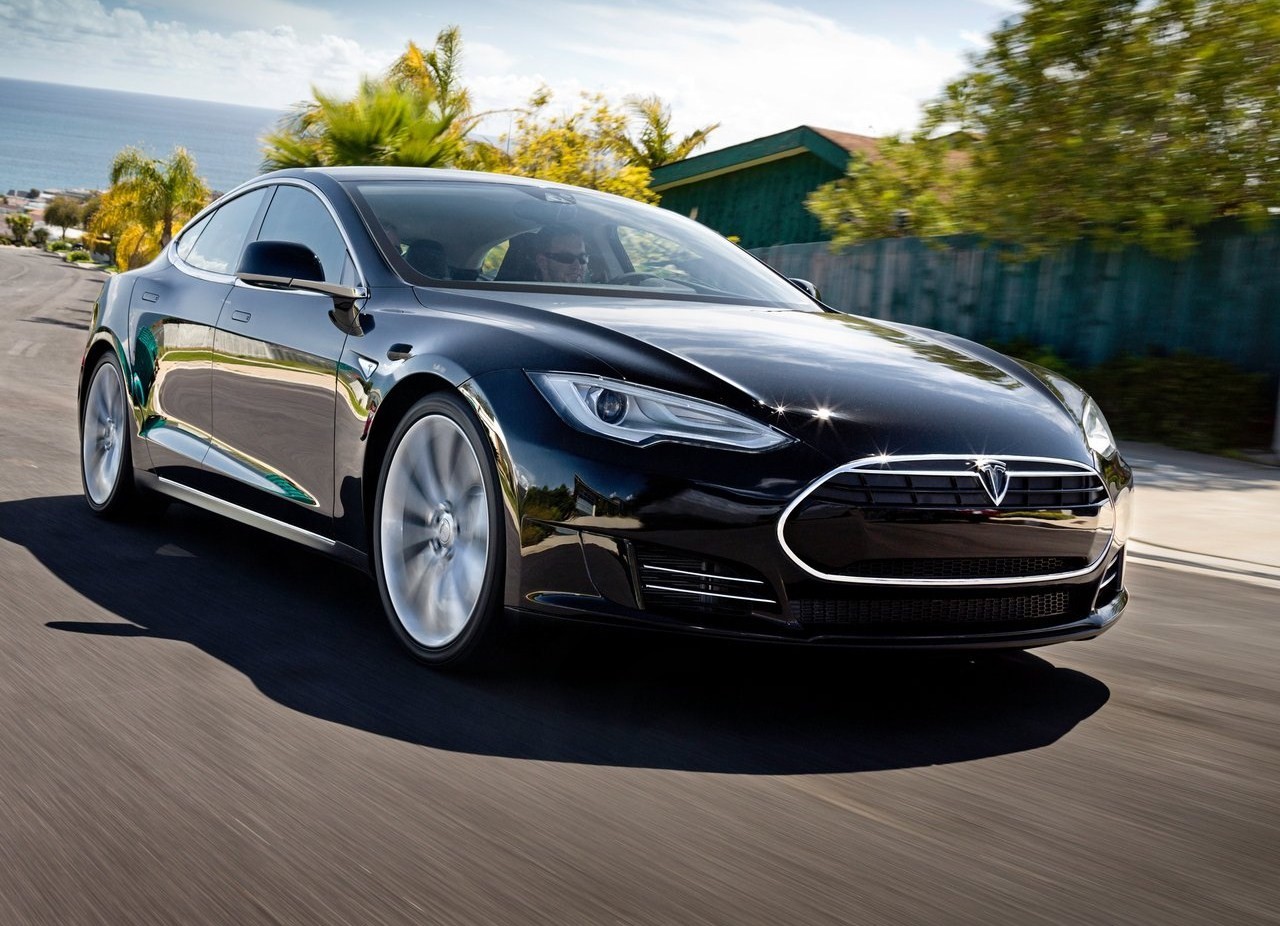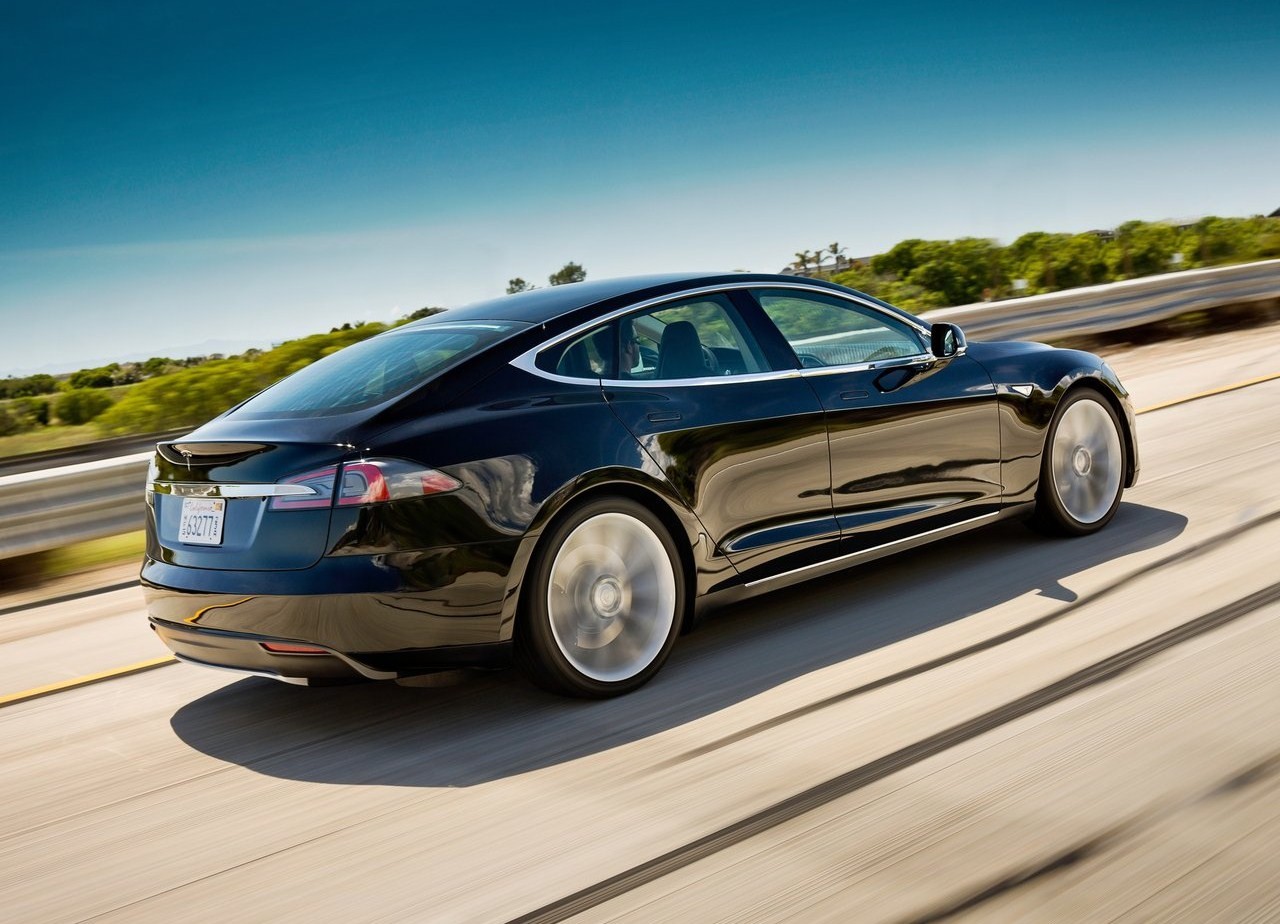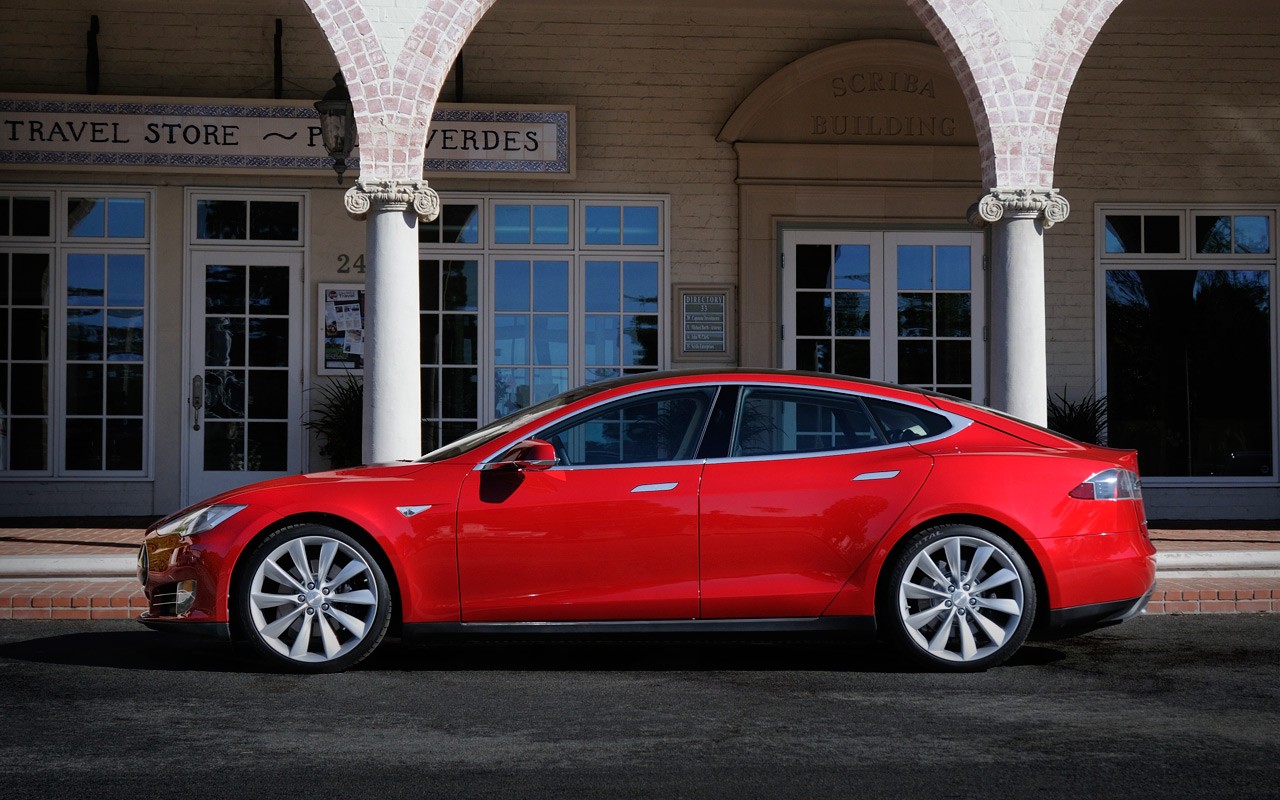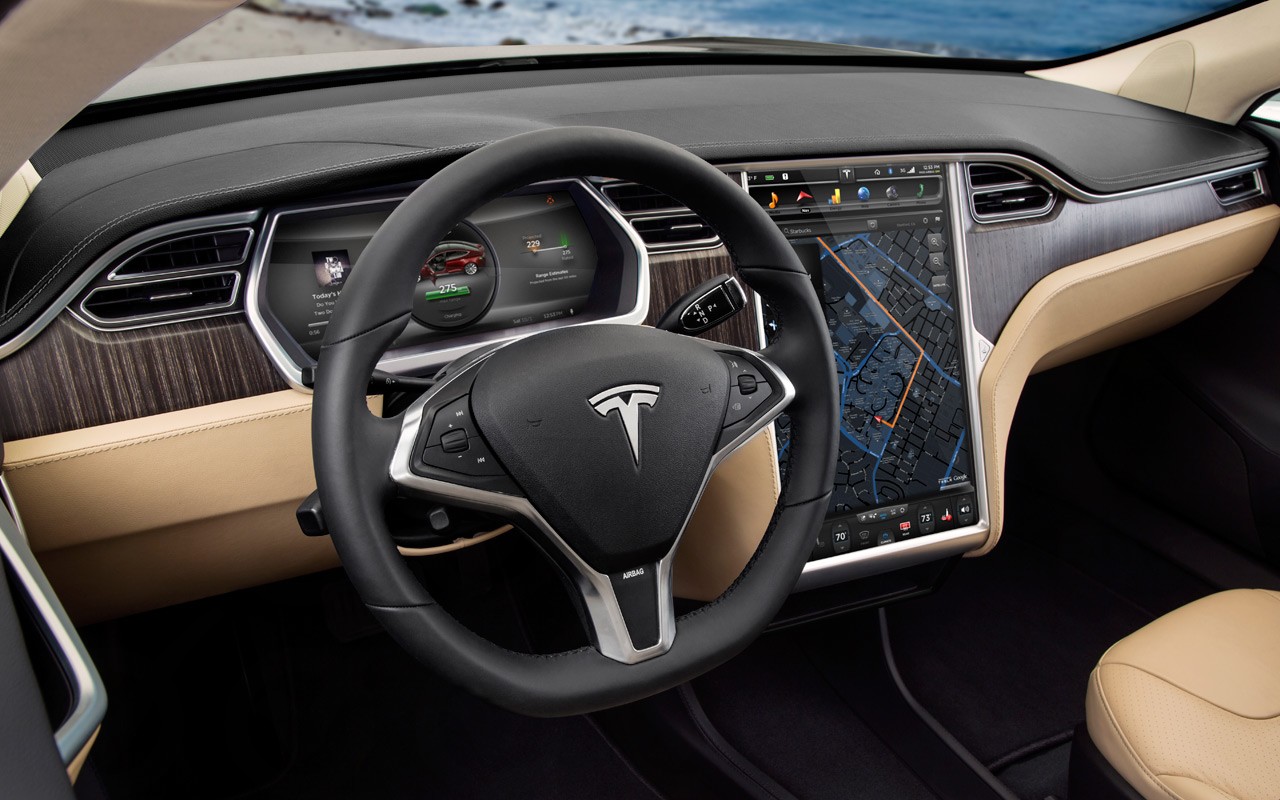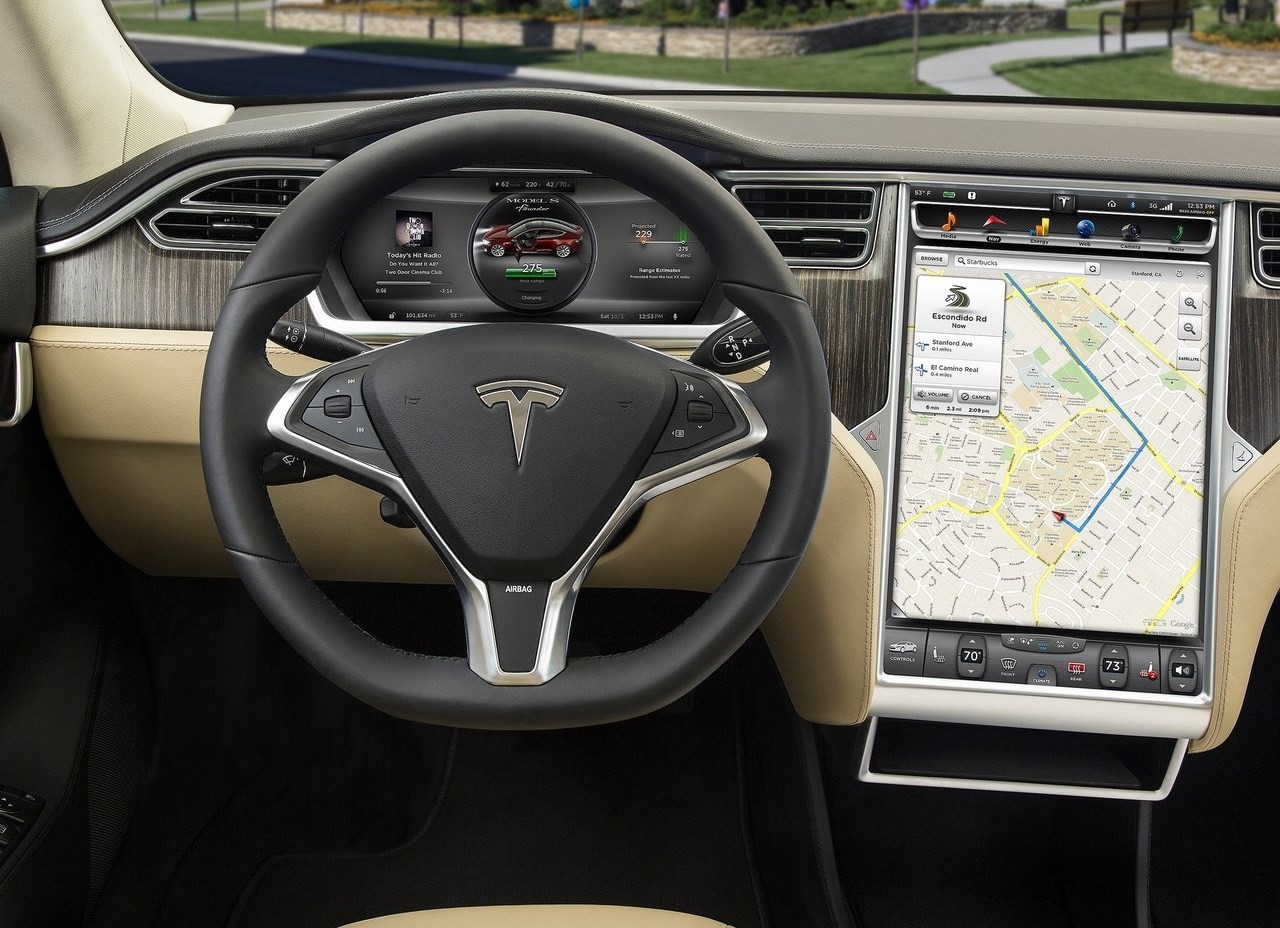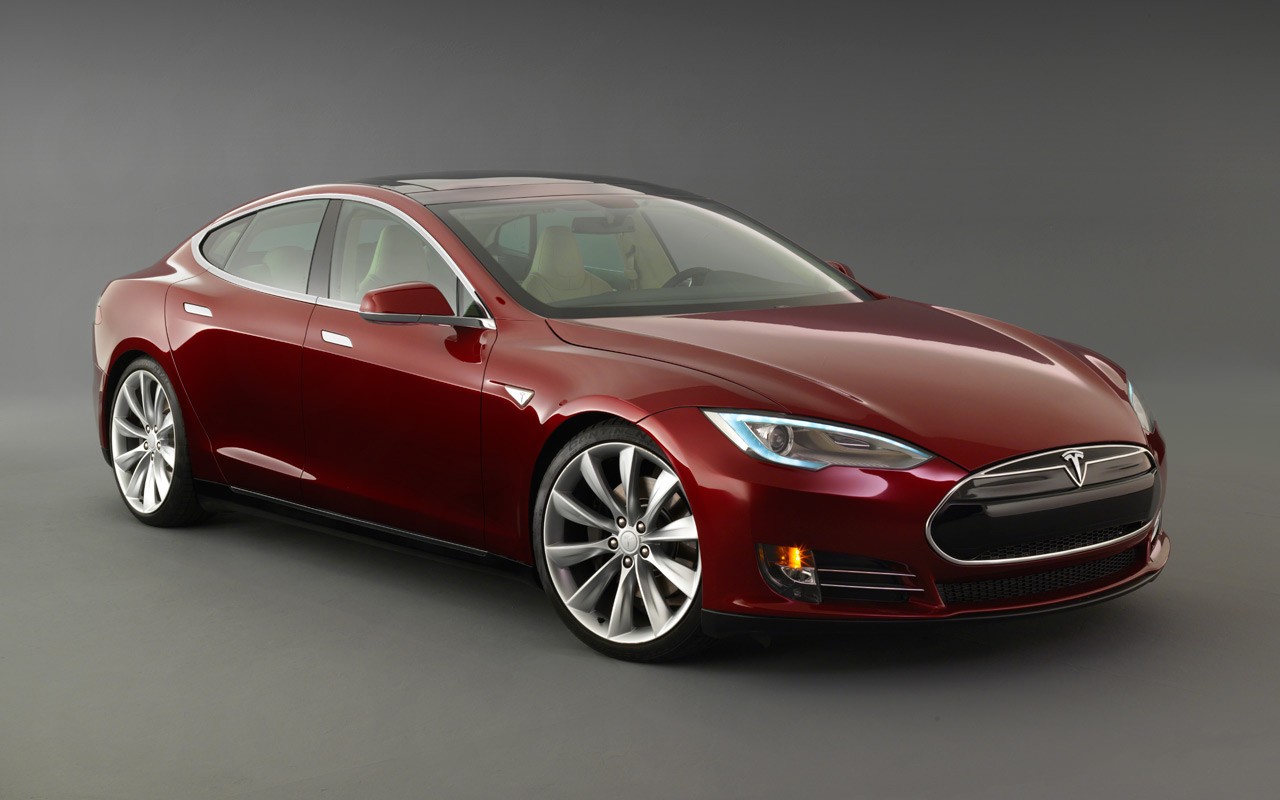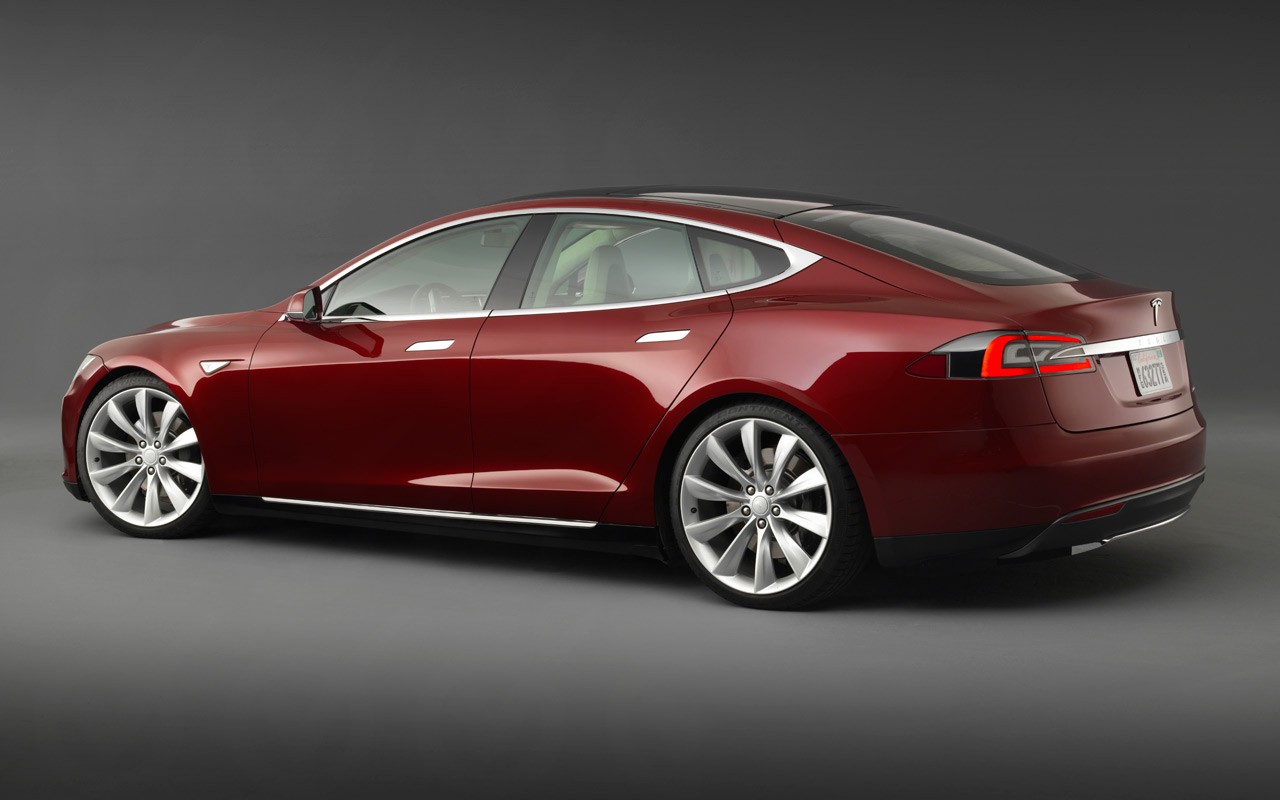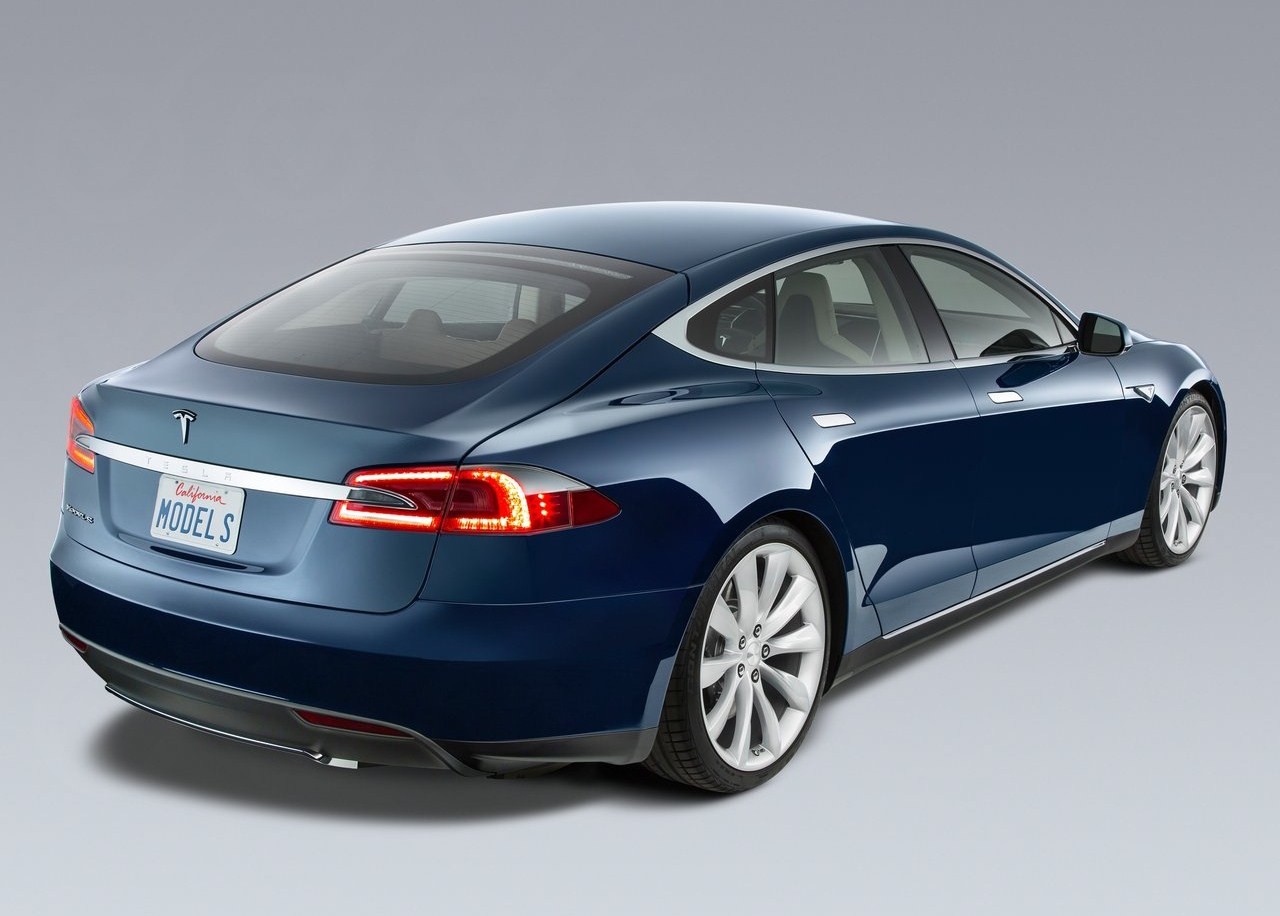
- A technological breakthrough: electric motors provide extraordinary performance and good range
- Spacious interior and cargo bay
- Flat front seats lack support
- Backwards compatible tech upgrades
- Generally comfortable ride…
- … though suspension is upset by bigger bumps
- Variable interior fit
- Environmental benefits limited by Australia’s energy sources (primarily coal)
- Lack of charging network
- Charging times
Overview
Released in Australia in August 2014, the Tesla Model S was a five-seat, electric-powered liftback. Manufactured in Fremont, California, the Model S was powered by a three-phase AC induction motor. The Model S range initially consisted of 60, 85 and P85 variants. All models, however, had a single speed fixed gear with a 9.73:1 reduction ratio.
The rear-wheel drive Model S 60, 70, 85 and P85 had the same AC induction motor, though the 60 kWh, 70 kWh and 85 kWh lithium-ion battery packs that provided different driving ranges and performance capabilities.
In July 2015, Model S 90, 90D and P90D models were announced with 90 kWh battery packs. Furthermore, a backwards-compatible battery pack upgrade was announced for the Model S 85 and 85D models which increased the output of their batteries to 90 kWh.
2015: Tesla Model S Dual Motor
In early 2015, Australian deliveries of all-wheel drive D (for dual motor) variants commenced. As such, the 60D, 70D, 85D and P85D variants had an additional motor driving the front wheels to provide all-wheel drive capability. While the 60D, 70D and 85D variants were fitted with a smaller rear motor for increased range, the P85D had the same rear motor as the P85 for increased performance.
Body and dimensions
The Tesla Model S had an aluminium chassis that was reinforced with high strength, boron steel. The battery charger for the Model S was integral to the vehicle with the charge port positioned behind the left rear tail-light.
The Model S was 4978 mm long, 1964 mm wide, 1435 mm tall and had a 2959 mm long wheelbase; kerb weight was 2108 kg, while the drag coefficient was 0.24 Cd. Cargo volume for the Model S was 745 litres, though this increased to 1645 litres when the rear seats were folded down. Furthermore, the front under-bonnet storage space (Tesla’s ‘frunk’) had a volume of 150 litres.
Steering and suspension
The Model S had electric power-assisted steering, double wishbone front suspension and independent multi-link rear suspension.
| Variant | Years | Battery | Range (EPA) | Peak power | Peak torque |
|---|---|---|---|---|---|
| 60 | 2014-15 | 60 kWh | 335 km | 225 kW at 5000-8000 rpm | 430 Nm at 0-5000 rpm |
| 60D | 2015 | 60 kWh | 335 km | 280 kW | N/A |
| 70D | 2015-on | 70 kWh | 390 km | 245 kW | |
| 85 | 2014-on | 85 kWh | 426 km | 270 kW at 6000-9500 rpm | 440 Nm at 0-5800 rpm |
| 85D | 2015-on | 85 kWh | 430 km | 280 kW | 491 Nm |
| P85 | 2014-15 | 85 kWh | 426 km | 310 kW at 5000-8600 rpm | 600 Nm at 0-5100 rpm |
| P85D | 2015-on | 85 kWh | 407 km | 515 kW | 930 Nm at 0-5100 rpm |
Safety equipment
Standard safety equipment for the Model S included dual front airbags, front knee and pelvis airbags, full-length curtain airbags, ABS, electronic brake force distribution, brake assist, electronic stability control, traction control and front seatbelts with pretensioners and load limiters.
In early 2015, standard features were extended to include autonomous emergency braking (AEB) and lane departure warning.
Euro NCAP testing
In Euro NCAP testing , the pre-October 2014 Tesla Model S received a five star safety rating which included an 82 per cent adult occupant protection rating and a 77 per cent child occupant protection rating. In the offset crash test, protection of the driver’s head, thighs and feet were rated as good, though chest and lower leg protection were rated as adequate (i.e. a slight risk of serious injury). In the side impact test, maximum points were awarded; in the more severe pole test, however, chest protection was rated as weak and abdomen protection as adequate.
Tesla’s Autopilot
From October 2014 production, the Model S was fitted with a forward radar, twelve long-range ultrasonic sensors (positioned to sense 4.9 metres around the car in every direction and at all speeds), a forward looking camera and a digitally controlled electric assist braking system. Based on this hardware, Tesla will issue future software releases to provide active safety features using digital control of motors, brakes and steering to avoid collisions. Specifically, the Model S will be able to
- Steer to stay within a lane;
- Change lanes in response to tapping the indicator stalk;
- Manage its speed by reading road signs; and,
- Use active, traffic-aware cruise control.
According to Tesla , it will take ‘several months’ for these ‘Autopilot’ features to be completed and uploaded to the cars.
Brakes
The Model S had 355 mm by 32 mm ventilated front brake discs and 365 mm by 28 mm ventilated rear discs.
